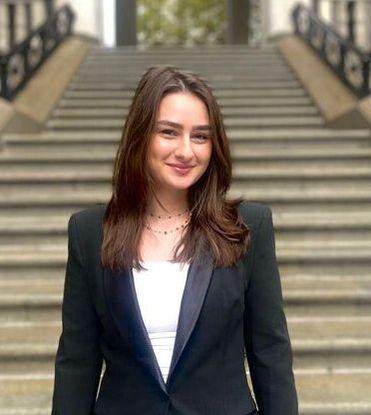|
Without working towards the establishment of transitional justice, a post-conflict society is unlikely to come to terms with its past and unite under one flag. Lebanon proves to be a case in point of such a phenomenon. As a country that has 18 religious sects, Lebanon’s political system is based on a confessional power-sharing system. This was established during the National Pact of independence (1943) from being a French mandate, and reinforced during the Taif Agreement (1990) that ended the 15 year brutish and bloody civil war (1975-1990). It follows that political parties are sectarian in nature, and politicians represent their sect and its people. For example in 1943, sects were granted the right to have their own religious courts and personal status laws, dividing people along sectarian lines. Consequently, the Lebanese find it difficult to identify themselves as part of a singular and unified national identity. This communal divide has been exacerbated by the civil war that continues to scar the population. No matter the age, people have vivid memories of the war, be it through visual landscapes or oral narratives that have been passed down generations.
The Lebanese Civil War Briefly put, the Lebanese civil war broke out due to domestic factors such as the desire for economic reform by Sunni Muslims. Moreover, Christian parties believed in the right to defend Lebanese sovereignty against the Palestinian Liberation Organisation carrying out attacks from Lebanon into Israel. Eventually, however, the war became a site of foreign intervention and militia control of various parts of the country. Blaming other sectarian political parties to justify their victimization during the war, in addition to hating and fearing one another, remains common in contemporary Lebanese society. Thus, memories of the war “cannot be easily buried, erased, or forgotten but instead are reworked and renegotiated within present contexts, discursive spheres, and everyday encounters.” (Larkin 2011, pp.618). Failure to achieve transitional justice on the institutional level The Lebanese government has repeatedly failed to allow for the forgiveness and reconciliation process within Lebanese society. It has issued a ‘state-sponsored amnesia’ of the war which considers that it was a ‘war of others.’ Politicians blame its occurrence on external actors such as the Palestinians, Israelis, Syrians and Americans who fought their war on Lebanese soil. Thus, the Taif Agreement focused on reconstructing the state’s security sector and redistributing power along sectarian lines in government. It did not indicate how long-term stability would be achieved in society, failing to mention the consequences of the atrocities that occurred during the war. This is demonstrated in the Blanket Amnesty Law (1991) which pardoned war crimes and crimes against humanity that had taken place. Similarly, in 2020, the government established the National Commission for the Missing and Forcibly Disappeared, however it was unable to make progress. In 2021, four commissioners resigned, highlighting the lack of professionalism and ability to reconcile Lebanese society. Spaces and the memory of war Therefore, the population has been unable to deal with their past and acknowledge the root causes of the war, which has increased anger and fear across sects. 750,000 people were displaced during the war, and a large proportion of this number remain. People are still missing or disappeared, as family members are unaware of what happened to them. Furthermore, many citizens witnessed mass killings and atrocities within and across towns. Thus, there has not been a sense of community fostered by reconciliation and the effects of this have been widespread. For example, towns in Beirut are visibly divided along communal lines and they have become spaces of memory. During the civil war, Beirut became the hub of territorialisation. Competing political parties began to fight for influence over various parts of the capital, and the demarcation of these smaller areas within the city are reflected to this day. Memories of the war, in the form of posters and graffiti of political parties and their leaders, can be found in areas such as Basta and Achrafieh. In the former, Amal political party logos are displayed. In the latter, a monument of Bachir Gemayel, the assassinated leader of the Lebanese Forces, can be found in the city centre. Thus, people living in these areas or passing through them are constantly reminded of the events of the war, making its memory part of everyday life. The memory of war and its influence on the new generation The youth in particular have been significantly affected by the war despite not having lived it. Nevertheless, the discourse of “us vs. them” remains. In their recollections of events during the war, Larkin finds that the youth reinforce the sectarian narratives that emphasise a person’s own communal suffering and vicitmisation. For example, he interviewed Alain, an Armenian Catholic, who discussed the atrocities of the attacks carried out by Palestinians on Christians near his hometown Dekwane. However, he did not mention the attacks followed by the Chrisitian militias on the massacre of 2000-3000 Palestinians. Thus, the youth’s narratives and recollection of the war are one-sided, selective and sectarian in nature. Another significant aspect of communal divide Lebanese post-conflict society is that narratives and hatred of other sects are passed down from parents to their children. Children are aware of the damage created to their homes and their villages by visiting these sites, looking at pictures and hearing stories from their parents and grandparents. Thus, memories of the war and their narratives are infused with emotional attachment. Moreover, it is common in Lebanon to encounter schools that are affiliated with sectarian political parties such as Hezbollah and Amal. Children chant names of political leaders and wear their symbols. Since the state’s constitution allows for religious communities to have their own schools, many of these institutions have a history curriculum that discusses their own account of history. For example, history textbooks that are used by the Druze Progressive Socialist Party allegedly correct the so-called biases of the Maronite account of the Lebanese Civil War. In effect, the youth are taught that their specific education about the history of the war is the correct one. Hence, analysing the root causes of the war and blaming other sects for the events that occurred in it strictly obstructs society from establishing transitional justice and living in harmony. A look at recent developments in Lebanon Although the Lebanese uprisings in 2019 called for the abolishment of sectarianism and removal of political elites in power, partisanship in Lebanon remains. Since then, people have encountered a worsening economic and humanitarian crisis. With the Lebanese pound depreciating over 90% against the US dollar, people are struggling to access their basic needs such as electricity, water, bread and gas. Life-saving medicines are also increasingly difficult to import and hospitals are unable to function efficiently with power cuts. In effect, citizens are continually relying on sectarian politicians for access to social welfare such as healthcare and education. Furthermore, political parties are continuing to extend their influence to university campuses where they pay for student tuition to recruit new followers. The effects of this reinforced communal divide and the memories of the civil war are further reflected in the sectarian violence that broke out in October 2021. Hezbollah and Amal supporters were attacked with snipers when protesting against Tarek Bitar, the judge investigating the 2020 Beirut Port Blast. The Lebanese Forces were accused of carrying out the attack, which quickly escalated into an open battle between both sides. The significance of this event was that it brought back memories and fear of the civil war, as fighting took place across the former front line in Beirut, separating a Shiite from a Christian town. This article has thoroughly demonstrated that if the past “not dealt with proactively, the past will always haunt post-conflict societies” (Paul van Zyl quoted by Ghosn and Khoury 2011, pp.381). Lebanon is the perfect example of this. People remain communally divided, carrying with them the trauma, pain and memory of the civil war. Without knowing what happened to friends and family members, no justice has been served. Anger towards other sects and blaming one another of the massacres and atrocities of the war are as evident as ever, and this has been passed down to the country’s youth today. It is difficult to imagine reconciliation being achieved with an institutionally weak government and the clientelistic practices of political elites that strive to reinforce sectarianism. Bibliography: Barak, Oren. “‘Don’t Mention the War?’ The Politics of Remembrance and Forgetfulness in Postwar Lebanon.” Middle East Journal 61, no. 1 (2007): pp. 49–70. http://www.jstor.org/stable/4330356. Cammett, Mellani and Sukriti Issar. 2010. “Bricks and Mortar Clientelism: Sectarianism and the Logics of Welfare Allocation in Lebanon.” World Politics 62, no. 3 (2010): pp. 381–421. http://www.jstor.org/stable/40891382 Cammett, Melani. “Lebanon, the Sectarian Identity Test Lab.” The Century Foundation, April 10, 2019. https://tcf.org/content/report/lebanon-sectarian-identity-test-lab/ Chehayeb, Kareem. “UN Urges Lebanon to Implement Reforms as Extreme Poverty Grows.” Al Jazeera, October 1, 2021. https://www.aljazeera.com/news/2021/10/1/un-lebanon-reforms-extreme-poverty-economic-crisis#:~:text=conference%2520on%2520Friday.-,The%2520UN%2520estimates%2520that%252078%2520percent%2520of%2520the%2520Lebanese%2520lives,population%2520living%2520in%2520extreme%2520poverty. Ghosn, Faten, and Amal Khoury. “Lebanon after the Civil War: Peace or the Illusion of Peace?” Middle East Journal 65, no. 3 (2011): pp. 381–97. http://www.jstor.org/stable/23012171. Halwani, Wadad. “Collective Memory and Amnesia after the War in Lebanon.” Brookings, November 24, 2020. https://www.brookings.edu/opinions/collective-memory-and-amnesia-after-the-war-in-lebanon/ Haugbolle, Sune. “Spaces of War, Spaces of Memory: Popular Expressions of Politics in Postwar Beirut.” In Contested Mediterranean Spaces: Ethnographic Essays in Honour of Charles Tilly, edited by Maria Kousis, Tom Selwyn, and David Clark, NED-New edition, 1., pp. 77–91. Berghahn Books, 2011. http://www.jstor.org/stable/j.ctt9qd7zm.11 Human Rights Watch. 2021. “Lebanon: Events of 2020.” Human Rights Watch, 2021. https://www.hrw.org/world-report/2021/country-chapters/lebanon Larkin, Craig. “Beyond the War? The Lebanese Post-memory Experience.” International Journal of Middle East Studies 42, no. 4 (2010): pp. 615–35. http://www.jstor.org/stable/41308712. Vohra, Anchal. “Sectarian Violence is Lebanese Elites’ Comfort Zone.” Foreign Policy, October 16, 2021. https://foreignpolicy.com/2021/10/16/sectarian-violence-is-lebanese-elites-comfort-zone/
0 Comments
Leave a Reply. |
Author Celine is a third year War Studies student at King's College, London. She researched and wrote this article as part of the BizGees & War Studies Department Internship programme.
|


 RSS Feed
RSS Feed

